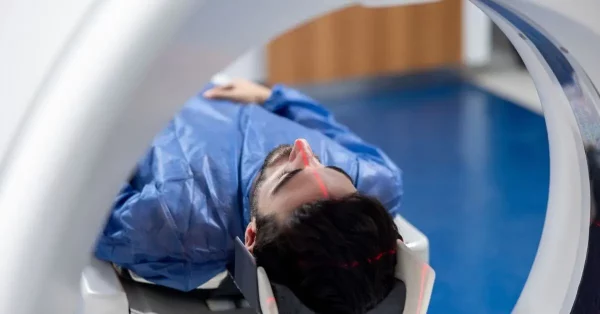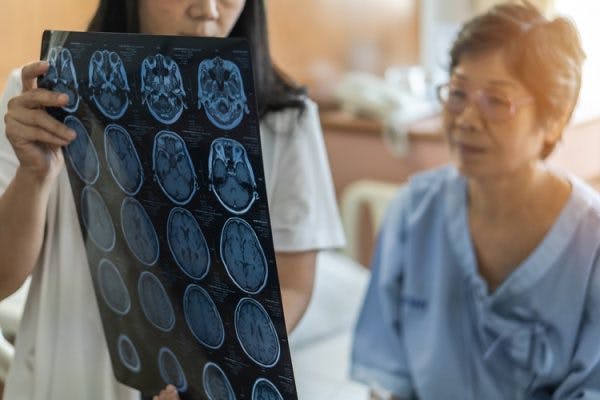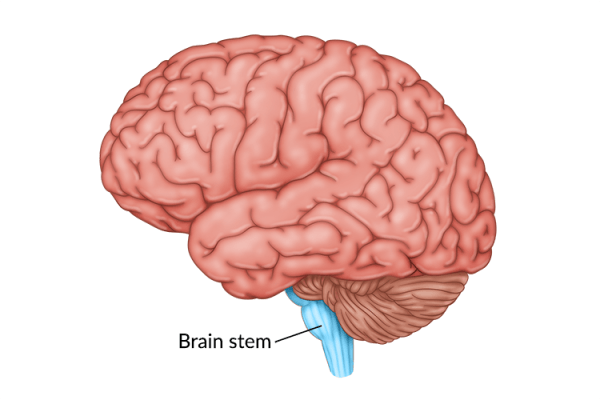Is traumatic brain injury permanent? A TBI can cause significant changes to a person’s cognitive, physical, and emotional functions. While damage to the brain cannot be reversed, functions affected by TBI can be recovered thanks to the brain’s natural ability to rewire itself.
To help you better understand recovery after traumatic brain injury, this article will discuss:
- Is traumatic brain injury permanent?
- How to minimize permanent damage after traumatic brain injury
- Best practices to optimize neuroplasticity after TBI
Is Traumatic Brain Injury Permanent?
While damage to the brain following a traumatic brain injury is permanent because damaged brain cells cannot regenerate or repair themselves, there is hope for functional recovery. This is because functions affected by TBI may be rewired and improved by healthy brain cells.
The effects of every TBI are unique, so it can be challenging to predict whether individuals will be able to achieve a full recovery. Depending on the extent of damage to the brain, the effects of a traumatic brain injury can range from mild to severe.
While many individuals can make a full recovery after a mild traumatic brain injury, those with more severe TBIs often experience more long-term effects. This occurs because mild traumatic brain injuries result in less damage to the brain. As a result, there are more healthy brain cells that can pick up the slack of damaged ones. Additionally, with a mild TBI, there are generally fewer affected functions to work on recovering.
Brain injury recovery primarily depends on promoting healthy regions of the brain to make adaptive changes. When greater areas of the brain are damaged, there is less potential for neuroadaptive changes to be stimulated.
Although complications of TBI can last for years, individuals with traumatic brain injuries should not lose hope. The brain is extremely adaptive, which makes it possible to regain a significant amount of function even years after injury. In the following section, we’ll discuss how to minimize permanent damage and promote recovery after TBI.
How to Minimize Permanent Damage After Traumatic Brain Injury

The brain consists of over 100 trillion neural connections. When a traumatic brain injury occurs, it can disrupt many of these connections, which can result in a wide range of physical, emotional, and cognitive effects. Once these connections are disrupted, the functions they are responsible for may become weakened, altered, or completely lost.
Therefore, to compensate for damage caused by TBI, individuals must focus on stabilizing the initial damage, promoting adaptive changes, and preventing further complications. We’ll discuss each of these steps in further detail below.
1) Get Immediate Medical Attention
A major part of minimizing the permanent effects of traumatic brain injury is to seek emergency medical attention as quickly as possible.
Emergency care for TBI typically focuses on ensuring that hypotension (low blood pressure), hypothermia (low body temperature), and hypoxia (low oxygen levels in the cells and tissues of the body) are treated. These 3 conditions are proven to contribute to the worsening of TBI.
Stabilizing these 3 factors can help contain brain damage and prevent further complications from developing.
2) Activate Neuroplasticity
Neuroplasticity refers to the brain’s ability to make adaptive changes by reorganizing its neural circuitry. It does this by rewiring functions and forming new neural connections based on experiences, learning, and environment. Through neuroplasticity, the brain can transfer functions once held in damaged parts of the brain to healthy areas unaffected by TBI.
Therefore, even if you suffered severe brain damage, it does not necessarily mean you have permanently lost an ability. With the right therapy, your brain can learn to compensate for an injury and reassign functions to undamaged areas. Neuroplasticity has enormous implications for traumatic brain injury recovery and opens up many possibilities in treatment.
Oftentimes, the best way to activate and optimize neuroplasticity is through participation in rehabilitative therapies and home programs.
3) Manage Secondary Effects
Individuals with traumatic brain injuries have an increased susceptibility to many secondary complications including pain, lack of motivation, and anxiety. It’s essential to properly manage these effects as they can interfere with your recovery goals.
Everyone experiences secondary effects of TBI differently, so a personalized approach to management is ideal for optimizing rehabilitative outcomes. By working with a team of rehab specialists and medical professionals, you can effectively minimize the impact of secondary effects on your day-to-day life.
Best Practices to Optimize Neuroplasticity After TBI

Engaging neuroplasticity is essential for recovering functions affected by traumatic brain injury. However, neuroplasticity does require effort on your end to have a more permanent effect on your recovery.
In order to promote neuroplasticity after brain injury, individuals should focus on:
- Repetition. Research proves that repetitive actions engage neuroplasticity and cause changes in the brain.
- Specificity. You must tailor therapy to target the specific function or skill you wish to improve.
- Intensity. It’s essential to challenge yourself to stay engaged and motivated.
Every function fires a different set of neural connections in the brain. Therefore, in order to improve any skill, you must regularly practice it. Consistently stimulating the same set of connections helps reinforce demand for that function in the brain. The more you practice and challenge yourself, the more the brain adapts.
Research shows that the brain is always in a flexible state, even in old age. Therefore, it’s never too late to promote recovery after a traumatic brain injury. While the brain experiences a heightened state of plasticity following TBI, it never completely runs out of neuroplasticity. As a result, as long as you continue to stimulate the brain through repetitive, task-specific, and intensive practice, there is potential for improvement.
Is Traumatic Brain Injury Permanent? Key Points
While many traumatic brain injuries result in permanent damage, the brain can and often does heal itself. However, patients must engage their brain’s neuroplasticity to achieve the best recovery outcomes.
The human brain is extraordinarily resilient. Even if you have received a grim diagnosis, do not give up. You may just surprise yourself (and even your doctors) by what you accomplish.
We hope this article helped you understand how to minimize damage and promote recovery after traumatic brain injury.










